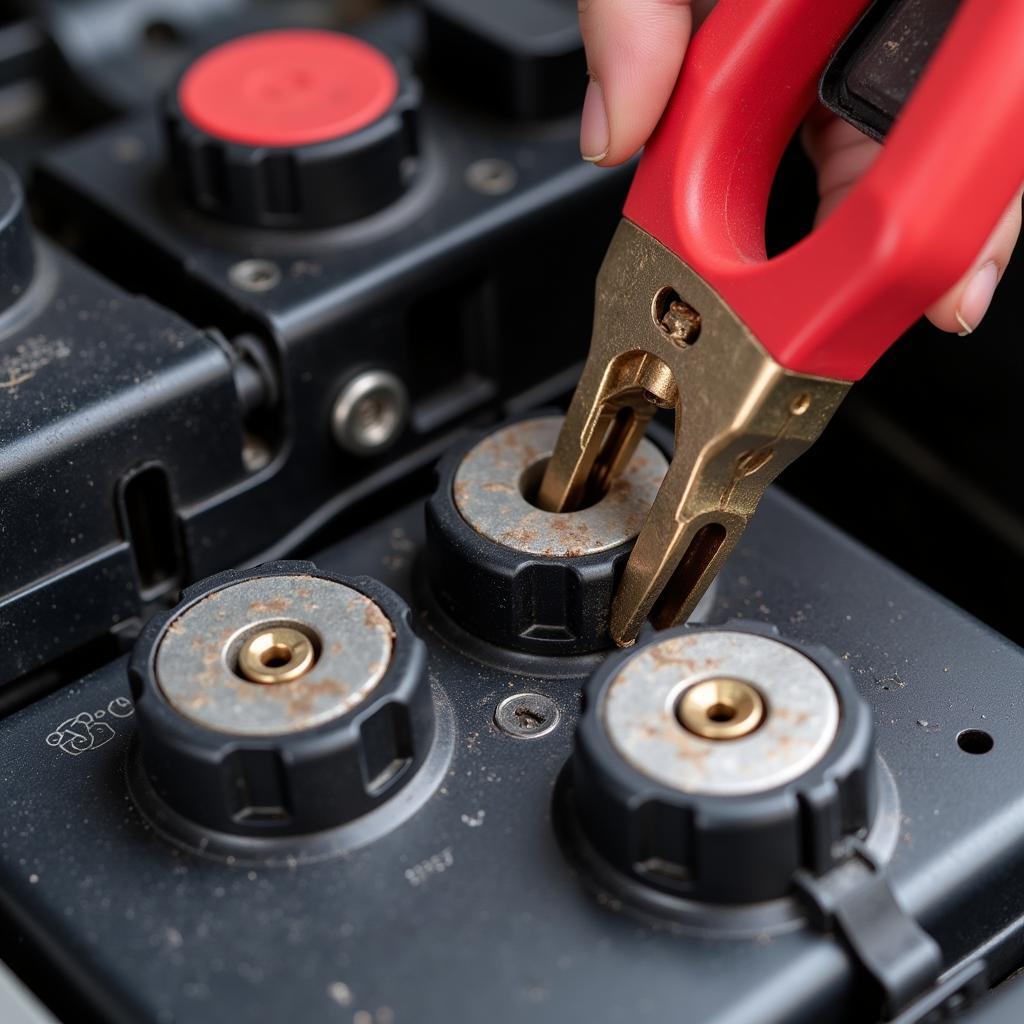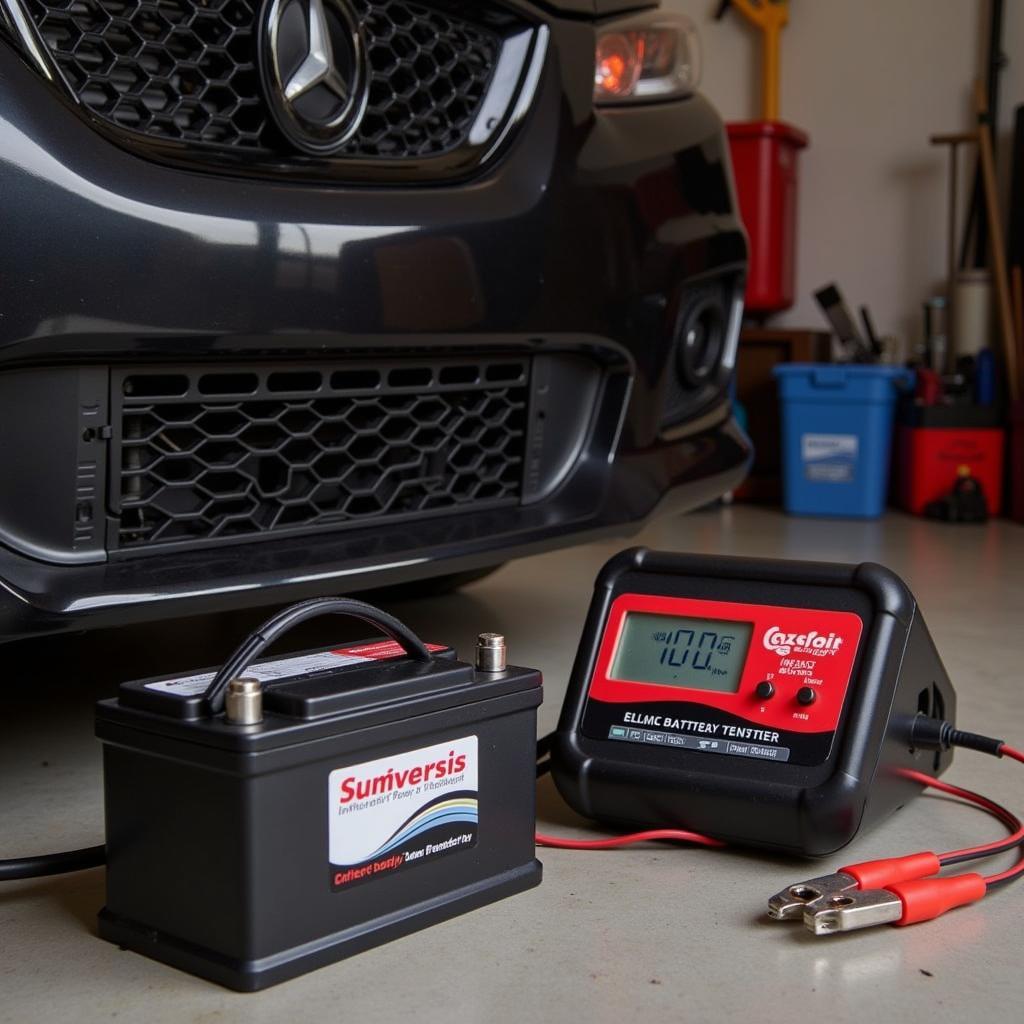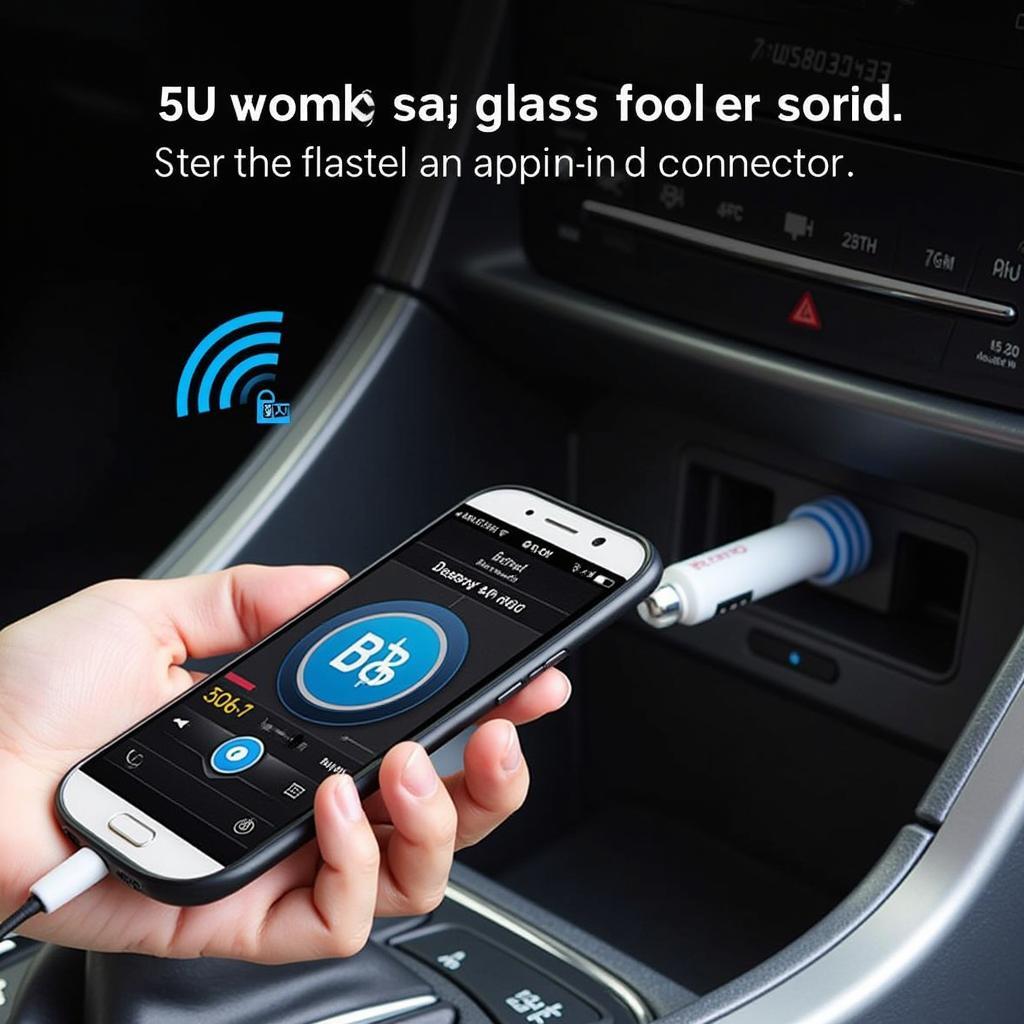A dead car battery is a frustrating experience, but a battery tender can be your lifeline. Understanding how to use a battery tender effectively, especially with a dead battery, can save you time, money, and unnecessary headaches. This article will guide you through the process, troubleshooting common issues, and offering expert advice for maintaining your car’s electrical health. Let’s dive in and get your vehicle back on the road. If your battery tender won’t charge a dead battery, you can read more about it here: battery tender wont charge dead battery.
Understanding the Battery Tender and Its Role with a Dead Battery
A battery tender is a smart charger designed to maintain a battery’s charge over extended periods, preventing it from going dead. Unlike traditional chargers, which can overcharge and damage a battery, a tender delivers a small current just enough to keep the battery topped off. But can a battery tender revive a completely dead battery? The answer depends on several factors, including the battery’s condition, the type of tender, and the extent of the discharge.
How a Battery Tender Works
A battery tender works by monitoring the battery’s voltage and automatically adjusting the charging current. When the voltage drops below a certain threshold, the tender begins charging. Once the battery reaches full charge, the tender switches to a float mode, delivering a trickle charge to compensate for self-discharge. This process prevents sulfation, a common cause of battery failure, and prolongs the battery’s lifespan.
Can a Battery Tender Charge a Completely Dead Battery?
While a battery tender is primarily designed for maintenance, some models can charge a deeply discharged or even a dead battery. However, if the battery is severely damaged or has internal shorts, even the best tender may not be able to revive it. In such cases, battery replacement is often the only solution. Cold weather can also exacerbate car battery problems. Learn more about car battery problems in cold weather.
Troubleshooting Battery Tender and Dead Battery Issues
Several factors can prevent a battery tender from charging a dead battery. Here’s a troubleshooting guide to help you identify and resolve common issues:
-
Check the Battery Tender Connection: Ensure the tender is properly connected to the battery terminals. Loose or corroded connections can disrupt the charging process.
-
Verify the Battery Tender Functionality: Test the tender on a known good battery to rule out any malfunction with the tender itself.
-
Assess the Battery Condition: Inspect the battery for any visible damage, such as cracks or leaks. A severely damaged battery may be beyond repair.
-
Consider the Battery’s Age: Batteries have a limited lifespan. An old battery may have reached the end of its useful life and may not hold a charge effectively, even with a tender.
 Connecting a battery tender to a dead car battery
Connecting a battery tender to a dead car battery
Tips for Using a Battery Tender with a Dead Battery
-
Choose the Right Battery Tender: Select a tender that is compatible with your battery type (AGM, lead-acid, etc.) and has the capacity to charge a dead battery if needed.
-
Follow the Manufacturer’s Instructions: Always refer to the manufacturer’s instructions for specific guidance on using the tender with your particular battery.
-
Be Patient: Charging a dead battery with a tender can take several hours or even days, depending on the battery’s condition and the tender’s charging rate.
-
Monitor the Charging Process: Regularly check the tender’s indicator lights to monitor the charging progress and ensure the tender is functioning correctly.
 Battery tender reviving a dead car battery
Battery tender reviving a dead car battery
Maintaining Your Car Battery for Optimal Performance
Regular battery maintenance can significantly extend its lifespan and prevent unexpected breakdowns. Here are some essential tips:
-
Clean the Battery Terminals: Regularly clean the battery terminals with a wire brush and a mixture of baking soda and water to remove corrosion.
-
Check the Battery Cables: Inspect the battery cables for any signs of damage or fraying. Replace damaged cables promptly.
-
Use a Battery Tender During Storage: If you store your vehicle for extended periods, use a battery tender to maintain the battery’s charge and prevent it from going dead. You might need to know what kind of battery goes in a key fob. Or you might need more information about a fob key fob.
“Regular battery maintenance is like giving your car a regular checkup. It helps prevent problems before they arise and keeps your vehicle running smoothly.” – John Smith, Automotive Electrical Engineer
Conclusion
A battery tender can be an invaluable tool for managing a dead battery, especially for preventative maintenance. By understanding how to use a tender effectively and following proper maintenance procedures, you can keep your car battery in optimal condition, avoid unexpected breakdowns, and extend its lifespan. Remember, a little preventative care can go a long way in keeping your vehicle on the road and your battery tender ready for action.
FAQ
- Can I leave a battery tender connected indefinitely? Yes, most modern battery tenders are designed for long-term connection and will automatically switch to a float mode once the battery is fully charged.
- How long does it take to charge a dead battery with a battery tender? The charging time varies depending on the battery’s capacity, the extent of discharge, and the tender’s charging rate. It can take anywhere from several hours to a couple of days.
- Will a battery tender damage my car’s electrical system? No, a battery tender is designed to deliver a safe and controlled charge, preventing overcharging and damage to the electrical system.
- What are the signs of a bad car battery? Common signs include slow engine cranking, dim headlights, clicking sounds when turning the key, and electrical malfunctions.
- How often should I clean my car battery terminals? It’s recommended to clean the terminals every few months or as needed, especially if you notice corrosion buildup.
- Can I jump-start my car if the battery tender fails to charge it? Yes, you can jump-start your car as a temporary solution. However, it’s essential to address the underlying battery issue to prevent future problems.
- How long do car batteries typically last? Car batteries typically last between 3 and 5 years, depending on usage and maintenance.


